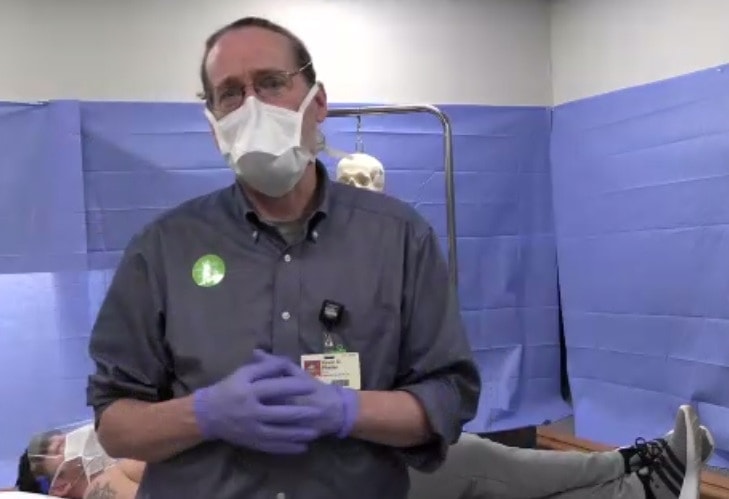American Heart Association’s Sweethearts Learn About Heart From UAMS Experts
| About 35 high school sophomores who are part of the American Heart Association’s Sweetheart Program got a close look into the inner workings of the heart in a virtual session April 26 at the University of Arkansas for Medical Sciences (UAMS).
The Sweethearts are high school sophomores who, over several months, learn about heart-healthy lifestyles and the prevention of heart disease and stroke through education and volunteerism. The goal of the program, which was founded in 1998, is to empower new generations with life-saving knowledge while developing a commitment to lifelong heart health, community service and leadership.
The session, which lasted for more than an hour, was put on by members of UAMS’ ArkanSONO program, a technology-based outreach program to expose high school students in central Arkansas to point-of-care ultrasound and other imaging technologies to stimulate student interest in Science, Technology, Engineering and Mathematics (STEM) fields and careers.
It was made possible through a STEM outreach grant, called the ArkanSONO Science Education Partnership Award, funded by the National Institutes of Health. The UAMS ArkanSONO program is in its third year of a five-year, $1.27 million research study with the goal of promoting diversity in STEM.
Before the COVID-19 pandemic, the ArkanSONO team, led by program director Kevin D. Phelan, Ph.D., conducted in-person STEM outreach sessions to ninth-grade students in the Little Rock School District and hosted 60 students on campus for a weeklong summer SONOcamp.
“Since the pandemic, we have had to reposition ourselves as a virtual STEM outreach program,” said Phelan, a professor in the UAMS College of Medicine’s Division of Clinical Anatomy.
This year, instead of teens in the Sweetheart program visiting campus to tour research labs and participate in other activities as they did in the previous three years, they joined a Zoom session led by Phelan and Tiffany W. Huitt, Ph.D., an associate professor in the UAMS Department of Physician Assistant Studies.
Huitt, participating from the basement of the Rahn Building on the UAMS campus, used an actual pig heart and a smaller sheep heart (noting that the size of human hearts is between both) to show her virtual audience the size, features and flexibility of the heart muscle. She even lifted up the pericardium, the fibrous sac covering the heart, and poked around inside to point out the valves and ventricles, and the direction of blood flow to and from the heart.

Tiffany Huitt, Ph. D., opens and discusses the interior components of a pig heart, left, and a sheep heart.
Huitt then showed the students another sheep heart that had been sliced into cross-sections to give a more detailed view. She demonstrated how blood flow in the coronary arteries can become blocked, preventing delivery of oxygen to tissue, which becomes damaged, causing a heart attack. She also showed how the arteries can be unblocked with a stent or bypass surgery.
Phelan performed a live ultrasound on a medical student, allowing participants to watch inner movements of the heart on a screen as he explained what the video was demonstrating. He later moved on to 3-D reconstructions from CT scans of bodies of people with cardiovascular issues, explaining what the images showed, including procedures performed and the likely cause of death. The bodies were donated to science.
Edward Yeh, M.D., a renowned cardiologist and chair of the UAMS Department of Internal Medicine who holds the Nolan Family Distinguished Chair in Internal Medicine, also joined in the Zoom conference and demonstrated with images how clinicians use an electrocardiogram.
“By using an actual stethoscope, you can actually learn quite a bit,” he said.
Tammy Quick, the AHA’s Heart Ball director who organized the event for the association, presented questions on behalf of a handful of students who wanted more details, with Phelan and Yeh supplying the answers. Quick said later that she has attended workshops about the heart with many groups of Sweethearts over the years, but continues to learn something new in each one.
